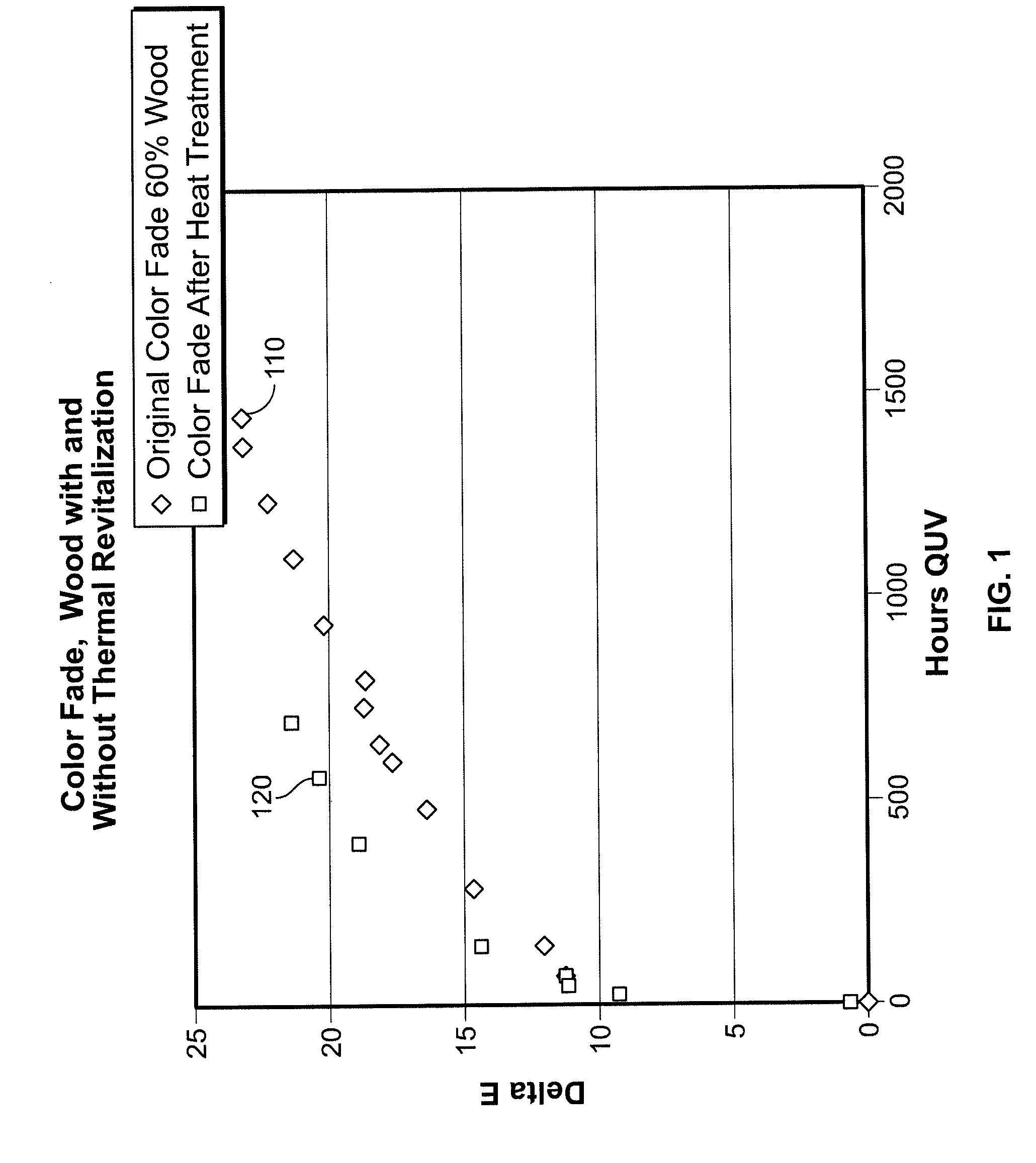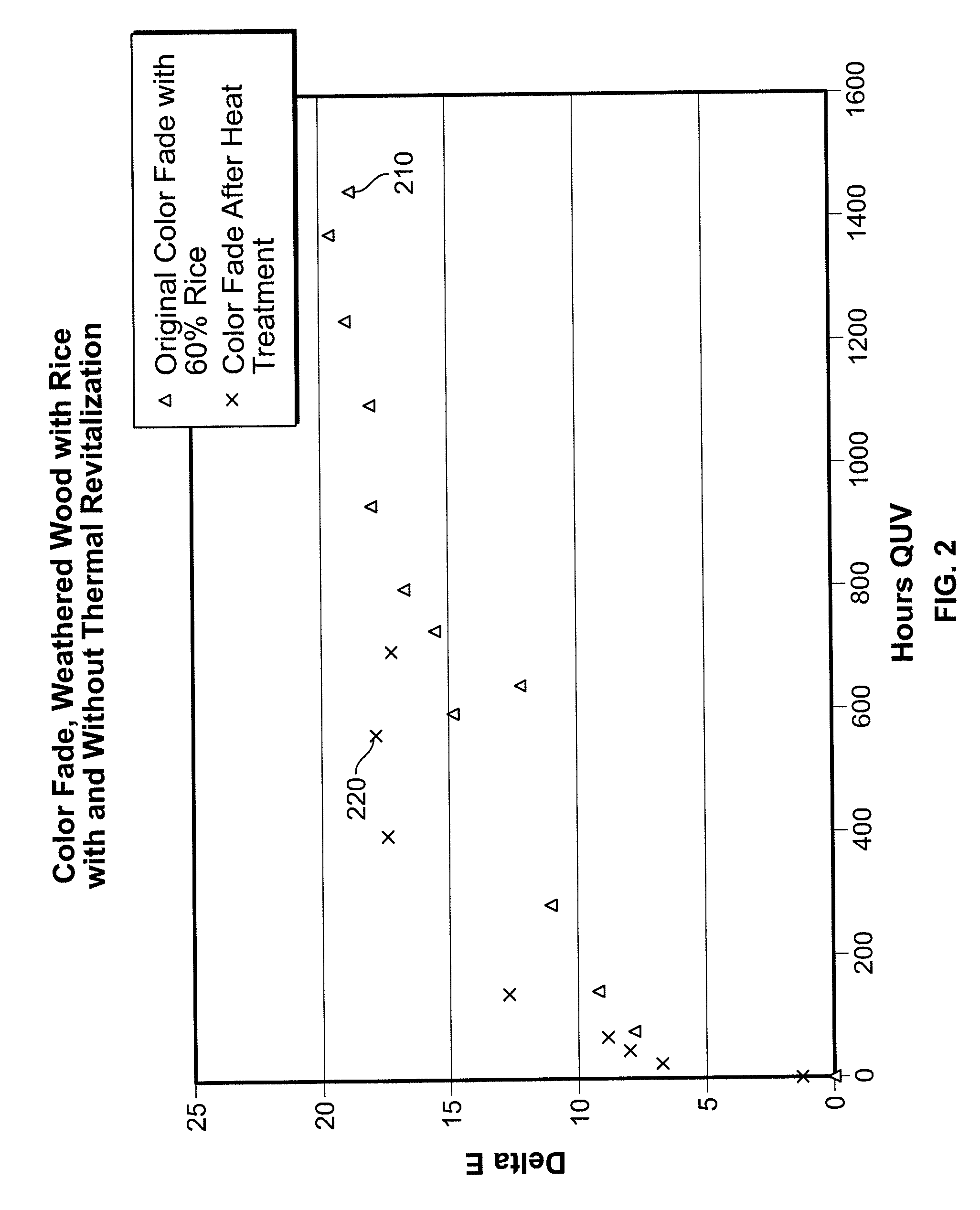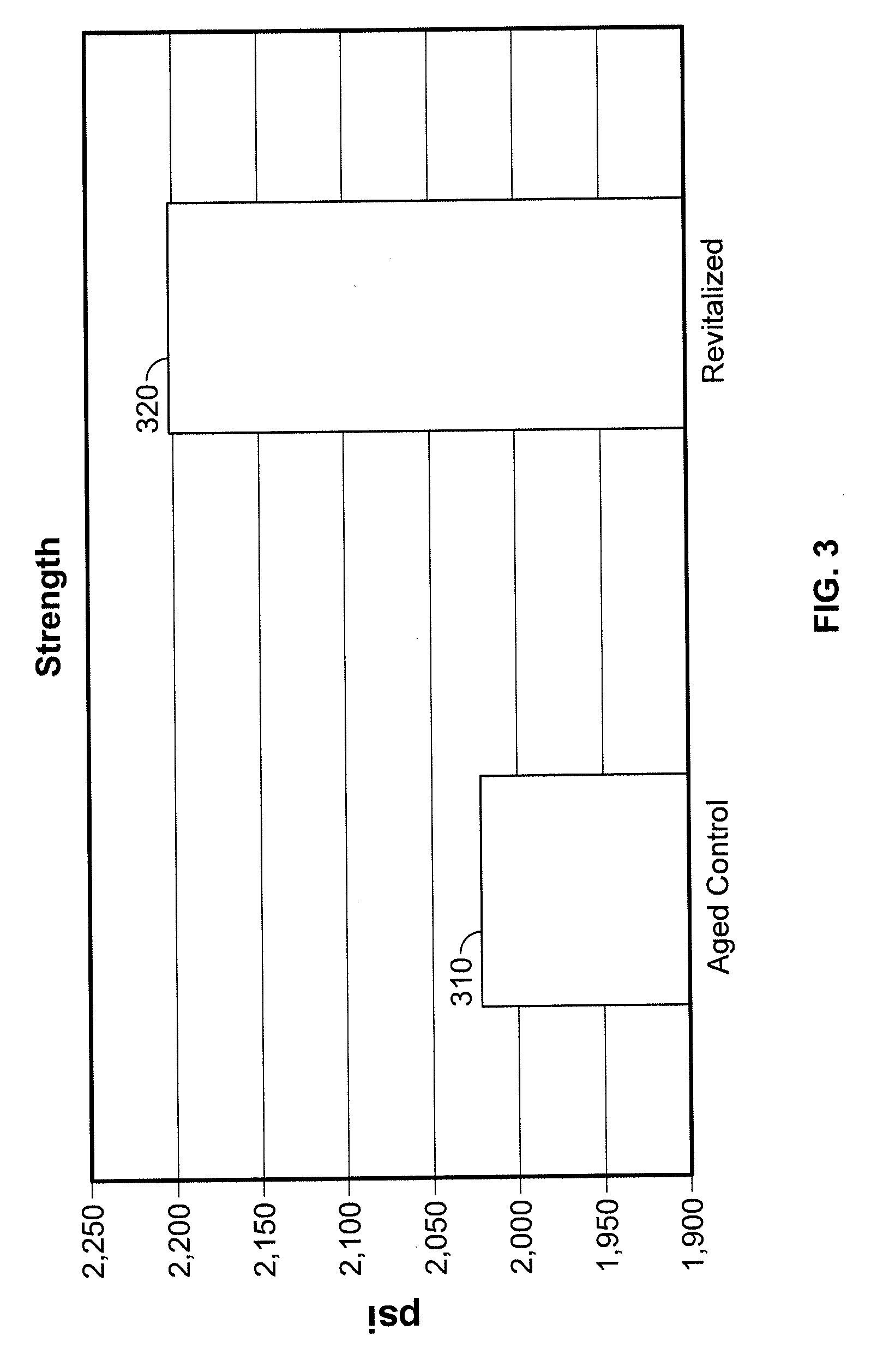Thermal Revitalization of Polymer-Containing Materials
- Summary
- Abstract
- Description
- Claims
- Application Information
AI Technical Summary
Benefits of technology
Problems solved by technology
Method used
Image
Examples
Embodiment Construction
[0011]The present invention relates to a method for restoring the surface finish of a plastic or PC object by the application of heat to the surface of the object from an external source. When the surface of the object reaches the proper temperature, the thermal revitalization reaction occurs, which removes damage such as scratches, scuffing, color fading, and chalking.
[0012]Plastic composite products generally include a filler and a polymer. Thermal revitalization may be carried out on PC products incorporating a variety of polymers such as polypropylene, polyethylene, or polyvinyl chloride (PVC). Similarly, PC products incorporating various fillers are compatible with the thermal revitalization process, such as: wood fibers from any type of wood, including hardwoods and softwoods, rice hulls, wheat hulls, wheat straw, flax, kenaf, corn stalks, corn ears, nuts, nut shells, peanuts, peanut shells, walnut, walnut shells, or glass beads.
[0013]The precise temperature necessary to cause...
PUM
| Property | Measurement | Unit |
|---|---|---|
| Temperature | aaaaa | aaaaa |
| Softening point | aaaaa | aaaaa |
| Temperature | aaaaa | aaaaa |
Abstract
Description
Claims
Application Information
 Login to View More
Login to View More - R&D
- Intellectual Property
- Life Sciences
- Materials
- Tech Scout
- Unparalleled Data Quality
- Higher Quality Content
- 60% Fewer Hallucinations
Browse by: Latest US Patents, China's latest patents, Technical Efficacy Thesaurus, Application Domain, Technology Topic, Popular Technical Reports.
© 2025 PatSnap. All rights reserved.Legal|Privacy policy|Modern Slavery Act Transparency Statement|Sitemap|About US| Contact US: help@patsnap.com



